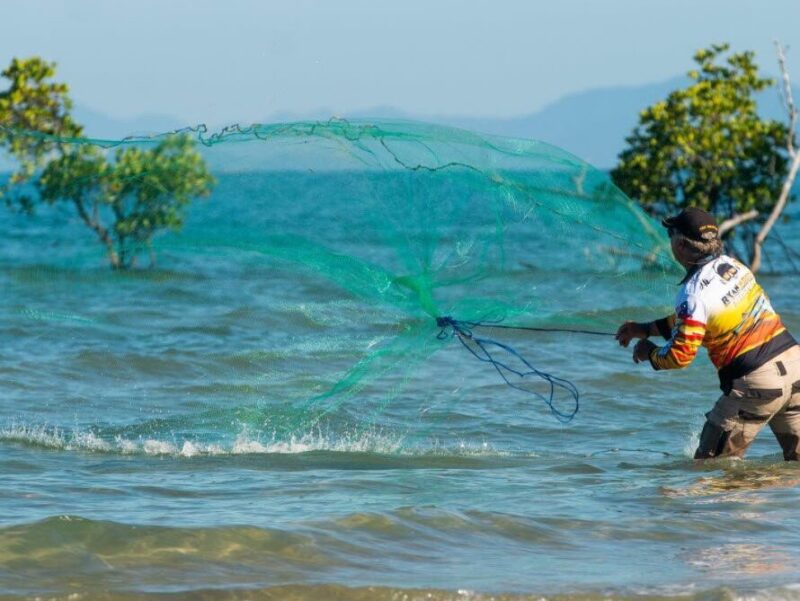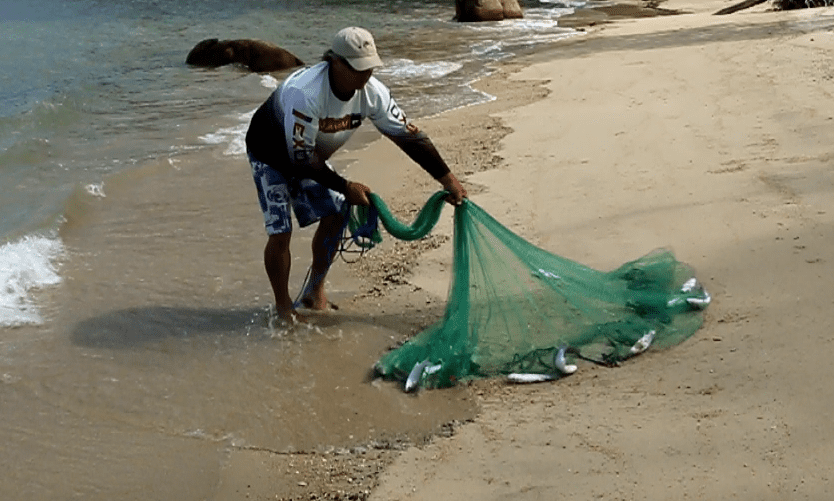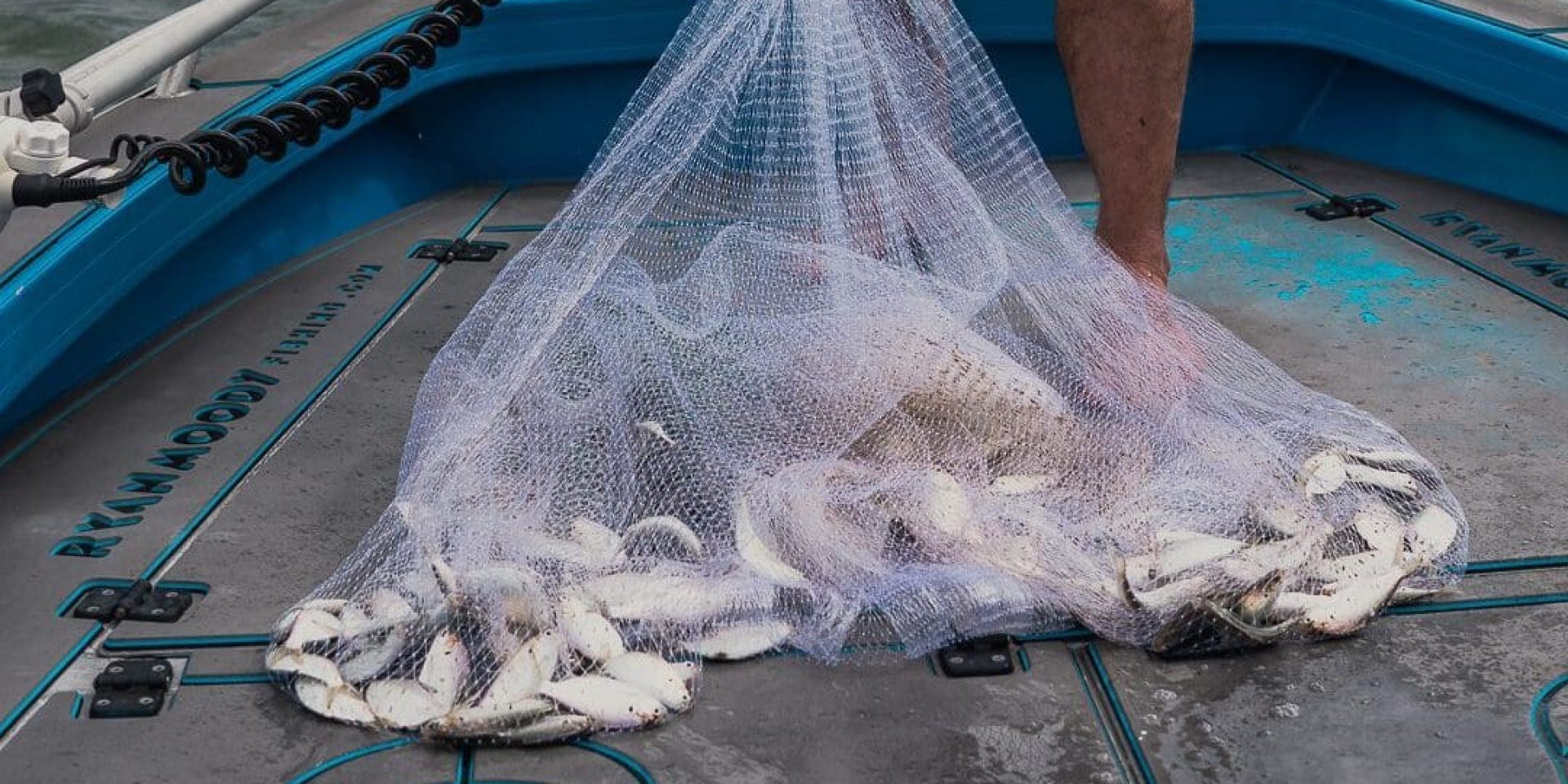Choosing the right cast net or the best cast net to catch your target species comes down to several factors.
- Type of cast net (horses for courses)
- Type and size of bait fish you hope to catch
- Net quality (cheapie nets can tend to fall apart).

CHOOSING THE RIGHT CAST NET TYPE
Firstly there are three main types of cast net and these are used for different applications.
- Bottom pocket cast net
- Drawstring cast net
- Top pocket cast net
We demonstrate the use of each of them in a previous video called cast net types and their applications.
BOTTOM POCKET CAST NET
When choosing the right cast net for shallow water (less than 1 metre), you can’t go past a bottom pocket.
As the name suggests, these nets have pockets sewn into the lead line.
The lead line weights the net and it sinks to the bottom.
As you retrieve the net, the lead line drags along the bottom preventing bait from escaping.
They are then caught in the pockets
They need to be used in the shallows as they need to hit the bottom to work.
Common target species are mullet, garfish/ballyhoo, whiting, silver biddies/mojarra.

DRAWSTRING CAST NET
Choosing the right cast net for deeper water depends on how the net closes.
Drawstring cast nets work differently from a bottom pocket because they close under the bait into one big pocket.
The drawstrings pull the bottom of the net up.
Hence they work better in deeper water where they don’t hit the bottom.
Common target species are herring/threadfin.




